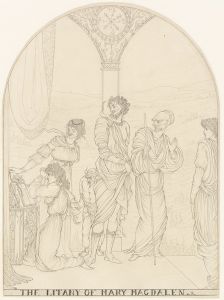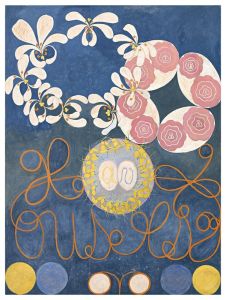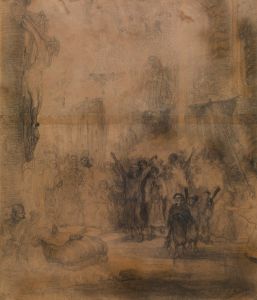
The Stigmatization of Saint Francis of Assisi
A hand-painted replica of Peter Paul Rubens’s masterpiece The Stigmatization of Saint Francis of Assisi, meticulously crafted by professional artists to capture the true essence of the original. Each piece is created with museum-quality canvas and rare mineral pigments, carefully painted by experienced artists with delicate brushstrokes and rich, layered colors to perfectly recreate the texture of the original artwork. Unlike machine-printed reproductions, this hand-painted version brings the painting to life, infused with the artist’s emotions and skill in every stroke. Whether for personal collection or home decoration, it instantly elevates the artistic atmosphere of any space.
"The Stigmatization of Saint Francis of Assisi" is a notable painting by the renowned Flemish Baroque artist Peter Paul Rubens. Created around 1630, this work exemplifies Rubens' mastery in depicting religious subjects with dramatic intensity and vivid detail. The painting captures the moment when Saint Francis of Assisi, the founder of the Franciscan Order, receives the stigmata, the wounds of Christ, as a divine sign of his piety and devotion.
Rubens was known for his dynamic compositions and his ability to convey emotion and movement, and this painting is no exception. The scene is set in a rocky landscape, typical of depictions of Saint Francis receiving the stigmata, which traditionally occurs on Mount La Verna in Italy. The saint is shown in a moment of ecstatic revelation, his arms outstretched and his gaze directed upwards towards a seraph, a six-winged angel, who is believed to be the source of the stigmata. The divine light emanating from the seraph illuminates the scene, highlighting the spiritual significance of the event.
Rubens' depiction of Saint Francis is characterized by a strong sense of realism and attention to detail. The saint is portrayed with a humble demeanor, wearing the simple brown habit of the Franciscan Order. His expression reflects a mixture of awe, humility, and acceptance of the divine gift. The landscape around him is rendered with Rubens' typical lushness, adding to the overall dramatic effect of the composition.
The painting is a testament to Rubens' ability to blend the spiritual with the earthly, capturing the mystical experience of Saint Francis in a way that is both accessible and profound. The use of light and shadow, a hallmark of Baroque art, enhances the emotional impact of the scene, drawing the viewer into the moment of divine encounter.
Rubens' interest in religious themes was influenced by the Counter-Reformation, a period during which the Catholic Church sought to reaffirm its doctrines and inspire faith through art. His works often reflect the Church's emphasis on the miraculous and the divine, aiming to evoke a sense of wonder and devotion in the viewer.
"The Stigmatization of Saint Francis of Assisi" is housed in the Alte Pinakothek, an art museum located in Munich, Germany. The museum is home to an extensive collection of European paintings from the 14th to the 18th centuries, and Rubens' work is among its highlights. The painting remains an important example of Rubens' religious oeuvre and continues to be admired for its artistic and spiritual depth.
In summary, Peter Paul Rubens' "The Stigmatization of Saint Francis of Assisi" is a masterful representation of a key moment in Christian hagiography, showcasing the artist's skill in conveying complex religious themes with clarity and emotional resonance. Through his use of composition, light, and detail, Rubens brings to life the mystical experience of Saint Francis, offering viewers a glimpse into the divine.


















